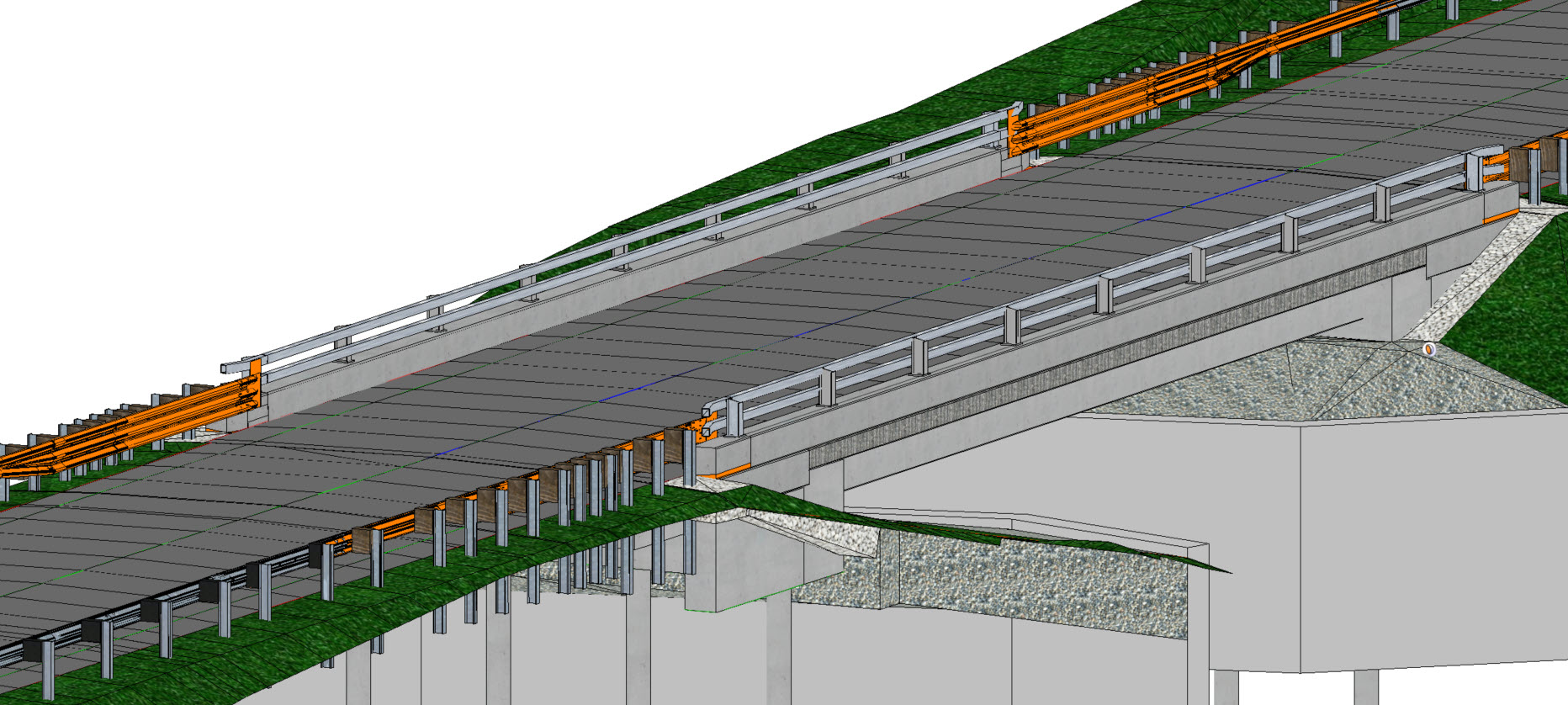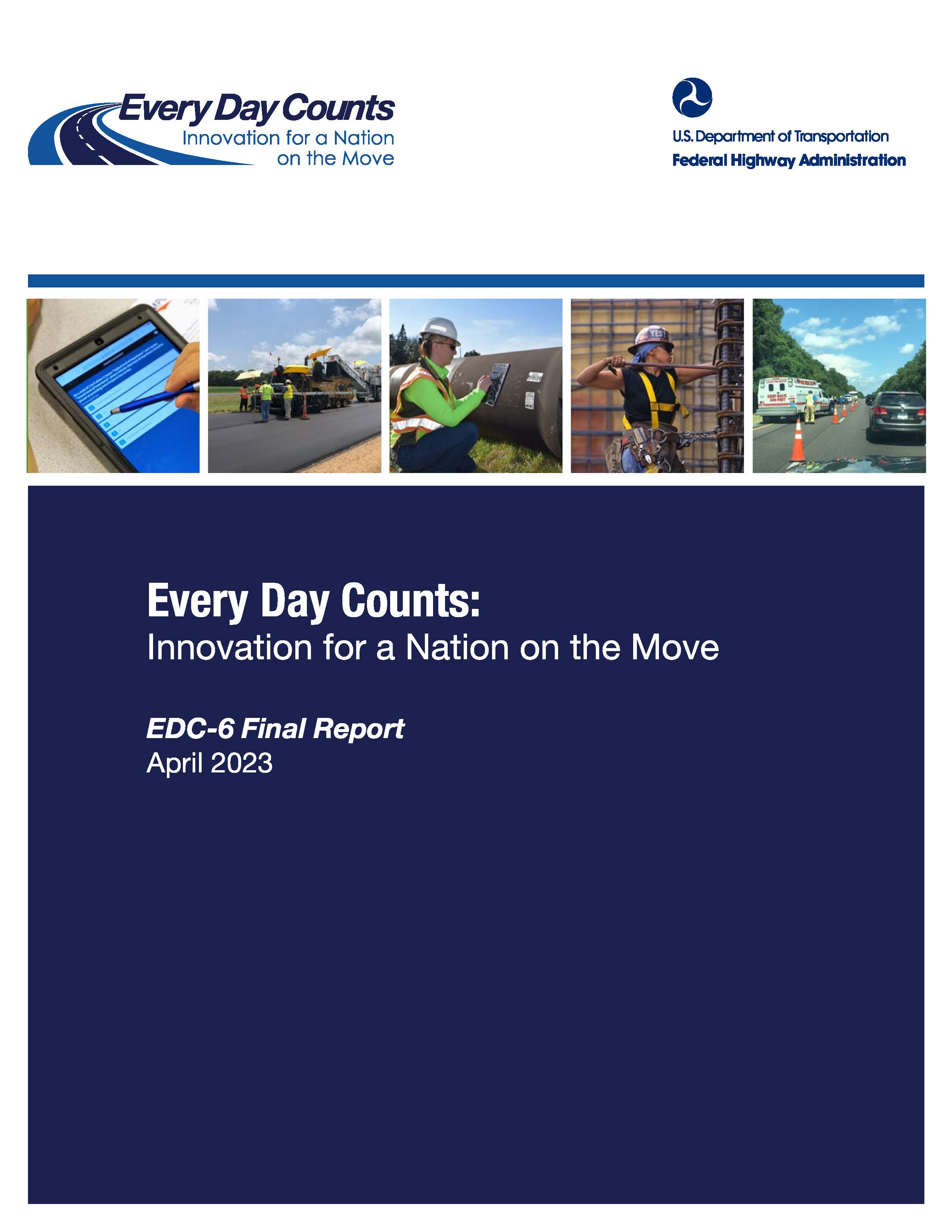
Digital As-Builts: Deriving Value from Data
Digital project delivery practices championed in past rounds of FHWA’s Every Day Counts (EDC) program, such as 3D models, e-Construction, and unmanned aerial systems, supported the evolution of digital as-builts (DABs). In the past, State departments of transportation (DOTs) had to manually extract information from copies of paper plans that had been marked-up by hand in the field. Now, an increase in available digital technologies offers new opportunities to collect and use this data more effectively.
DABs are a digital record of the assets within a constructed facility, including their properties and locations. Design models and other digital data originating in construction (including quality assurance data from e-Ticketing) provide a means to extract and transmit the information digitally, increasing efficiency and reducing error. When DABs are stored in a way that enables them to be accessed across the department, they offer numerous benefits. With timely, reliable data about the assets that are in service, agencies can head off problems before they are found in the field—improving reliability and lowering costs.
Under the sixth round of EDC (EDC-6), the DABs implementation team focused on helping agencies better use the data created during design and construction to serve business needs during operations and maintenance.
“Digital delivery provides valuable workflow efficiencies, from design and construction to asset life cycle management, and digital as-builts close a significant gap in digitalizing practices,” said EDC-6 team lead David Unkefer. “Agencies that haven’t already adopted digital as-builts are looking for ways to do so. The EDC-6 effort has enabled information sharing so that States can determine how to best implement digital as-builts in a practical way, using the tools available to them.”
Successful Practices and Approaches
Using digital data to build and maintain highway projects is becoming an industry standard, but the States currently using DABs did not reach that point overnight. In fact, the Minnesota DOT’s journey began just over a decade ago, and the agency accomplished several important steps along the way that brought them to where they are today.
While the value of collecting and integrating data during project delivery and passing it along for business needs beyond construction is clear, implementing DABs is a complex process that requires collaboration among agency divisions, support from executive leadership, and buy-in from stakeholders. One way in which some State DOTs have launched DABs is by creating an implementation plan that breaks down the process into manageable steps.

The Pennsylvania DOT will use this 3D design model to create a more robust digital as-built of the guiderail incorporating attributes and metadata.
Credit: Pennsylvania Department of TransportationThe Pennsylvania DOT (PennDOT) developed a comprehensive implementation plan called Digital Delivery Directive 2025 to adopt the digital delivery process as a department standard within 5 years. The plan takes an incremental approach to completing multiple pilot projects. In 2022, PennDOT piloted DABs for guiderails, with contractors collecting inventory information and locations in a standardized spreadsheet. PennDOT found that the data subcontractors typically provide when submitting for payment had all the information needed to populate the spreadsheet, other than location information. DABs also improved the accuracy of the as-built records.
The pilots proved the concept of having contractors collect and deliver DAB information, especially on resurfacing, restoration, and rehabilitation-type projects where the condition of the guiderail is not certain until the contractor is in the field. PennDOT will now develop information requirements for additional assets and processes to merge DABs data into its various asset inventories before expanding piloting of DABs in 2024.
A Look at the Future
As DABs evolve to provide a valuable resource for asset inventories, States are exploring how to best apply these inventories to improve the planning, design, construction, and maintenance of their facilities. Beyond EDC-6, the FHWA Office of Construction and Resource Center will continue their efforts to support States in their goals to realize the power of integrating data collected throughout the lifecycles of their assets.
EDC-6 Final Report Available

The final report summarizing the deployment status of the seven innovations in the sixth round of EDC (EDC-6) is now available on the EDC website. Read the report to learn more about the innovations and see which ones each State implemented over the last 2 years. The report also includes spotlight features from around the country highlighting agency successes in using these innovations in their programs.
—MORE INFORMATION
Visit the DABs webpage to register for an upcoming webinar or hear recordings from past sessions.
Contact David Unkefer of the FHWA Resource Center for information and technical assistance.
Read the EDC-6 Final Report to see how DABs progressed during the sixth round of Every Day Counts.
Notice: The U.S. Government does not endorse products or manufacturers. Trademarks or manufacturers’ names appear in this article only because they are considered essential to the objective of the document.
Recommended Citation: U.S. Department of Transportation, Federal Highway Administration - Washington, DC (2023) Innovator Newsletter, May/June 2023, Volume 16 (96). https://doi.org/10.21949/1521747



